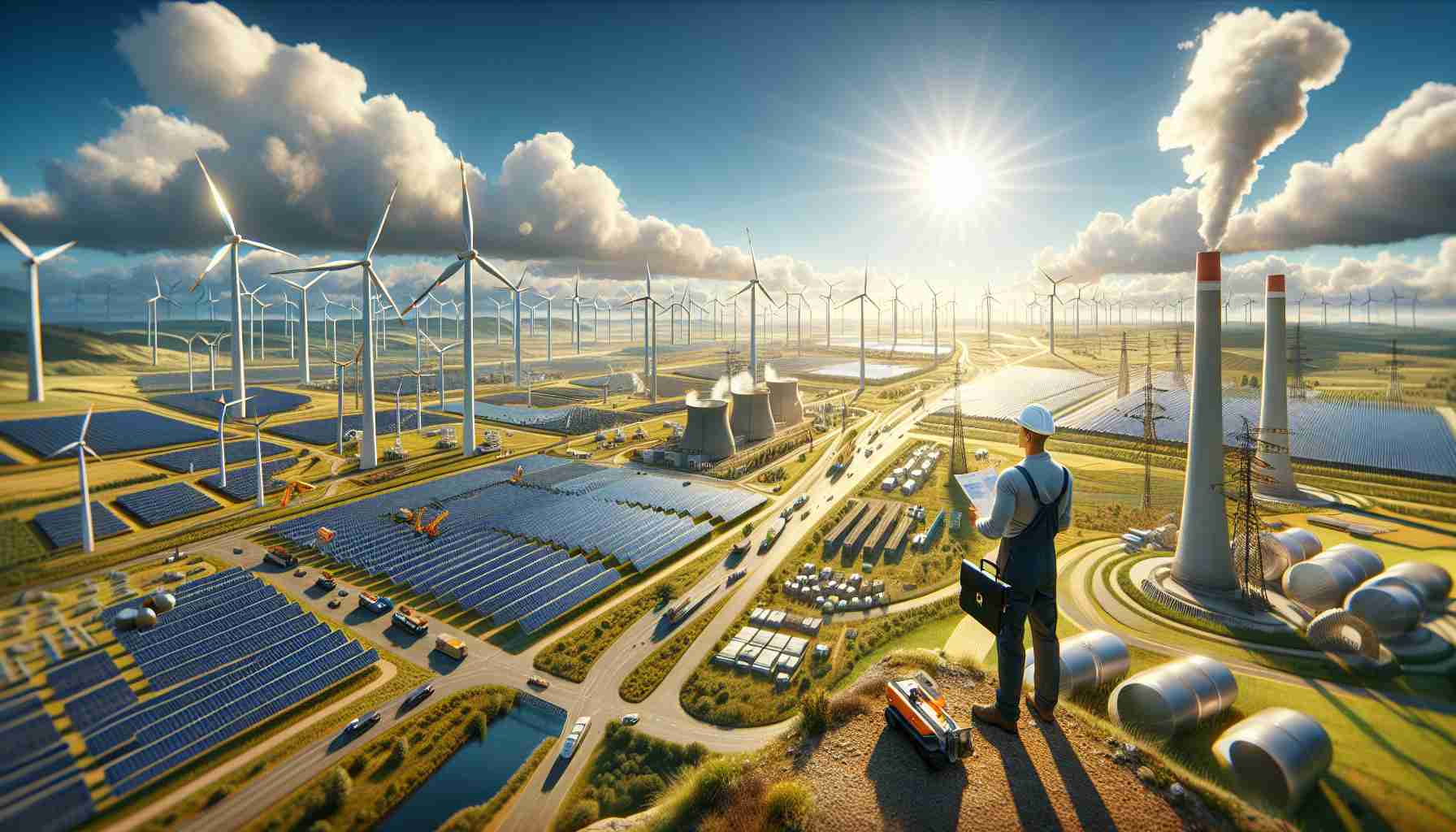
Germany is embracing renewable energy like never before. A recent report from the Federal Network Agency revealed that renewable sources constituted an impressive 59% of the nation’s electricity generation in 2023, marking a rise from 56% the previous year.
At the forefront of this transformation is wind energy, which played a crucial role, contributing 31.9% to the overall energy mix. Solar energy also made significant strides, providing 14.7% of the total electricity supply. Interestingly, electricity consumption in Germany increased by 0.9%, yet the total power generation experienced a decline of 4.2%, leading to a total of 431.7 TWh produced. This dip was primarily due to reduced reliance on conventional energy sources.
Among fossil fuels, lignite or brown coal was still a notable player, accounting for 16.4% of the energy, while natural gas contributed 13.2%, and hard coal made up 6.3%. Notably, 2023 marked a historic transition for Germany as it completed its first full year without any nuclear power, following the closure of its nuclear facilities in April of the same year.
Germany has set an ambitious goal of achieving climate neutrality by 2045, underscoring its commitment to a sustainable energy future. This shift represents not just a change in energy policy but a transformative moment in Germany’s approach to energy production and consumption.
Germany’s Renewable Energy Revolution: A 2023 Update
Overview of Germany’s Renewable Energy Landscape
Germany is experiencing a remarkable transformation towards renewable energy, achieving a new milestone in 2023. According to the Federal Network Agency, renewable sources accounted for an impressive 59% of the nation’s electricity generation, up from 56% in 2022. This shift underscores the country’s commitment to reducing carbon emissions and transitioning to sustainable energy sources.
Key Contributors to Energy Generation
Wind and solar power are at the forefront of this renewable energy revolution. Wind energy emerged as the dominant source, providing 31.9% of the nation’s electricity. Solar energy also demonstrated significant growth, contributing 14.7% to the overall energy mix. Together, these sources are pivotal in moving Germany toward its climate goals.
Despite a 0.9% increase in electricity consumption, total power generation saw a decline of 4.2%, leading to a production of 431.7 TWh. This reduction is largely attributed to a decreased reliance on conventional energy sources.
Fossil Fuels Still in the Mix
Despite significant advancements in renewables, fossil fuels remain a notable part of the energy landscape. Lignite, or brown coal, still accounted for 16.4% of energy production, followed by natural gas at 13.2% and hard coal making up 6.3%. This continuing use of fossil fuels poses challenges to Germany’s climate objectives.
The End of Nuclear Energy
A historic transition occurred in 2023 as Germany marked its first full year without nuclear power following the closure of its nuclear facilities in April. This pivotal move away from nuclear energy aligns with Germany’s broader strategy to enhance renewable energy use while phasing out nuclear and fossil fuels.
Future Goals and Commitments
Germany is not stopping at impressive current figures; it has set an ambitious target of achieving climate neutrality by 2045. This goal is not only a policy directive but also a transformational agenda aimed at reshaping energy production and consumption across the nation.
Challenges and Opportunities
Pros and Cons of Germany’s Renewable Energy Policy
Pros:
– Significant reduction in greenhouse gas emissions.
– Establishment of a robust infrastructure for renewable energy.
– Creation of jobs in the renewable sector.
Cons:
– Reliance on intermittent energy sources, which may lead to energy supply challenges.
– Continued dependence on fossil fuels despite renewable gains.
– Economic impacts due to the phase-out of nuclear energy and fossil fuels.
Innovations in Renewable Energy
Germany is continually investing in innovations to enhance its renewable energy capability. This includes advancements in energy storage technology to manage supply and demand better and improvements in energy efficiency in residential and industrial sectors.
Conclusion
Germany’s energy landscape in 2023 reflects a bold commitment to sustainability through an increased reliance on renewable sources. As the nation strives towards its 2045 climate neutrality ambition, it faces both challenges and opportunities in fostering a cleaner, more sustainable energy future. For more on Germany’s energy advancements, visit the German Federal Ministry for Economic Affairs and Energy.



